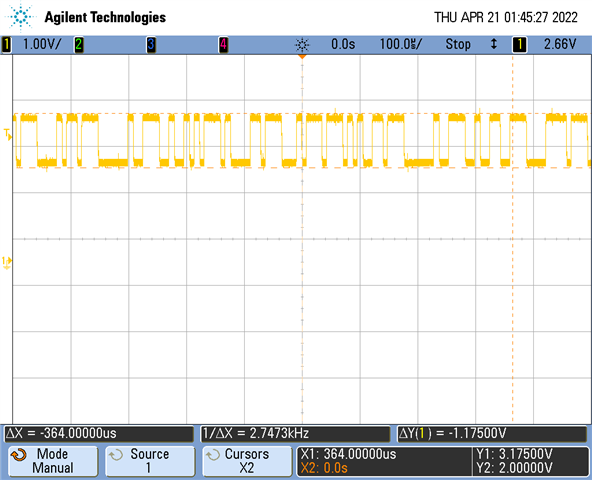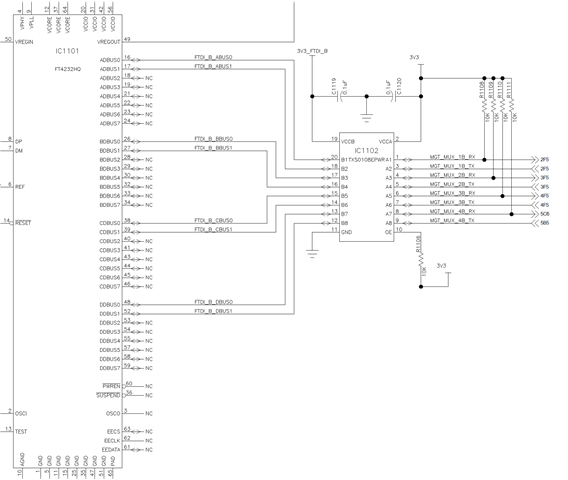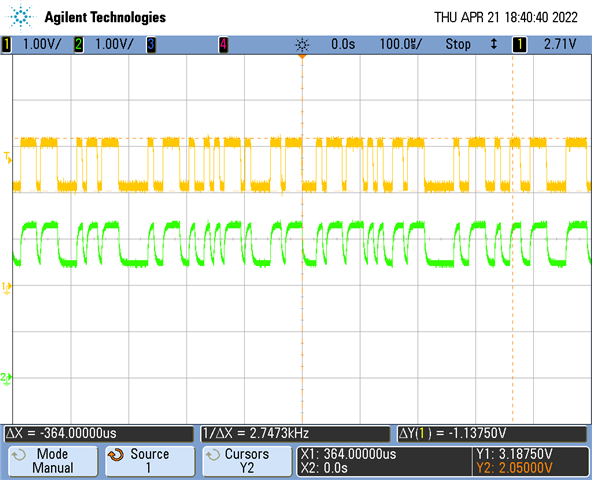Other Parts Discussed in Thread: SN74CB3Q3245, SN74AHC4066
I'm using a TXS0108EPWR to buffer and translate some UARTs between a processor and an FTDI USB chip. The TX and RX pairs to the processor are all on the "A" side and the UART to USB chip is on the "B" side of the TXS0108E. Both A and B voltage levels are nominally 3.3V, but they are generated from separate supplies so that's why I have the buffer in between. I've ensured that the "B" side voltage is slightly higher than the "A" side (3.32V vs 3.28V).
The issue I'm seeing is that the TXS0108E is clamping the UART signals high such that I only get about 1V of swing from top to bottom. Not nearly enough to properly decode the signal. Rather than a logic 0 measuring 0V and a logic 1 measuring ~3.3V, I'm seeing around 2.0V for a logic 0. See the scope plot below. Both the "A" and "B" sides match like this.

If I disconnect power to the "B" side of the TXS0108E, the "A" side starts to go the full swing again all the way down to GND. It seems like there's some issue with the "B" side clamping the A side high. I can toggle the "B" side power and watch the signal go from clamped above 2V to normal (down to GND). I've tried different A/B pairs and multiple boards with always the same results.
What's also strange is that I've used this exact same circuit before on another design and did not have this issue. The only difference is that I used the TXS0108EPWR package this time instead of TXS0108ERGYR like the older board.
Any suggestions for what might be causing this issue and how to fix it?




